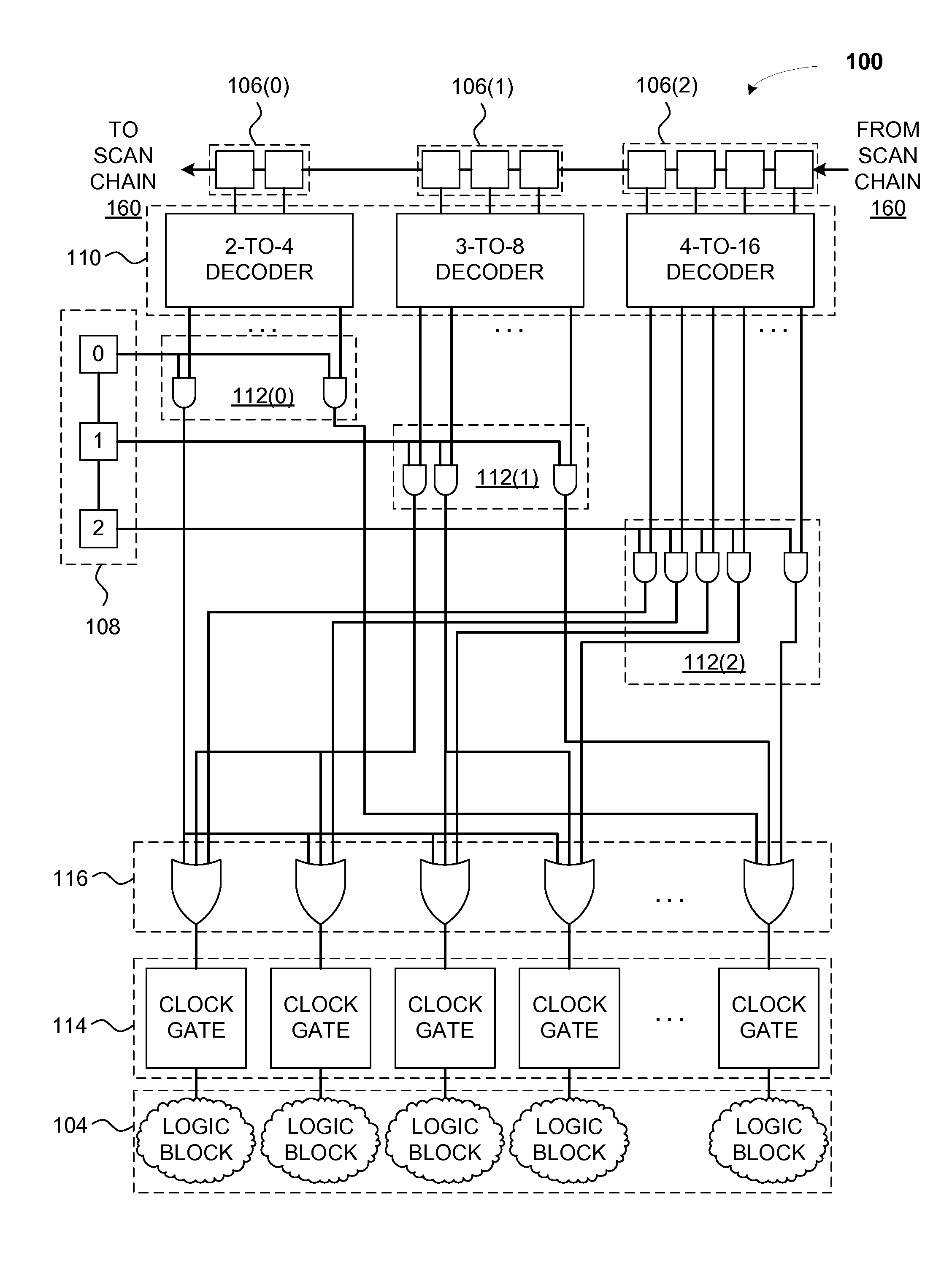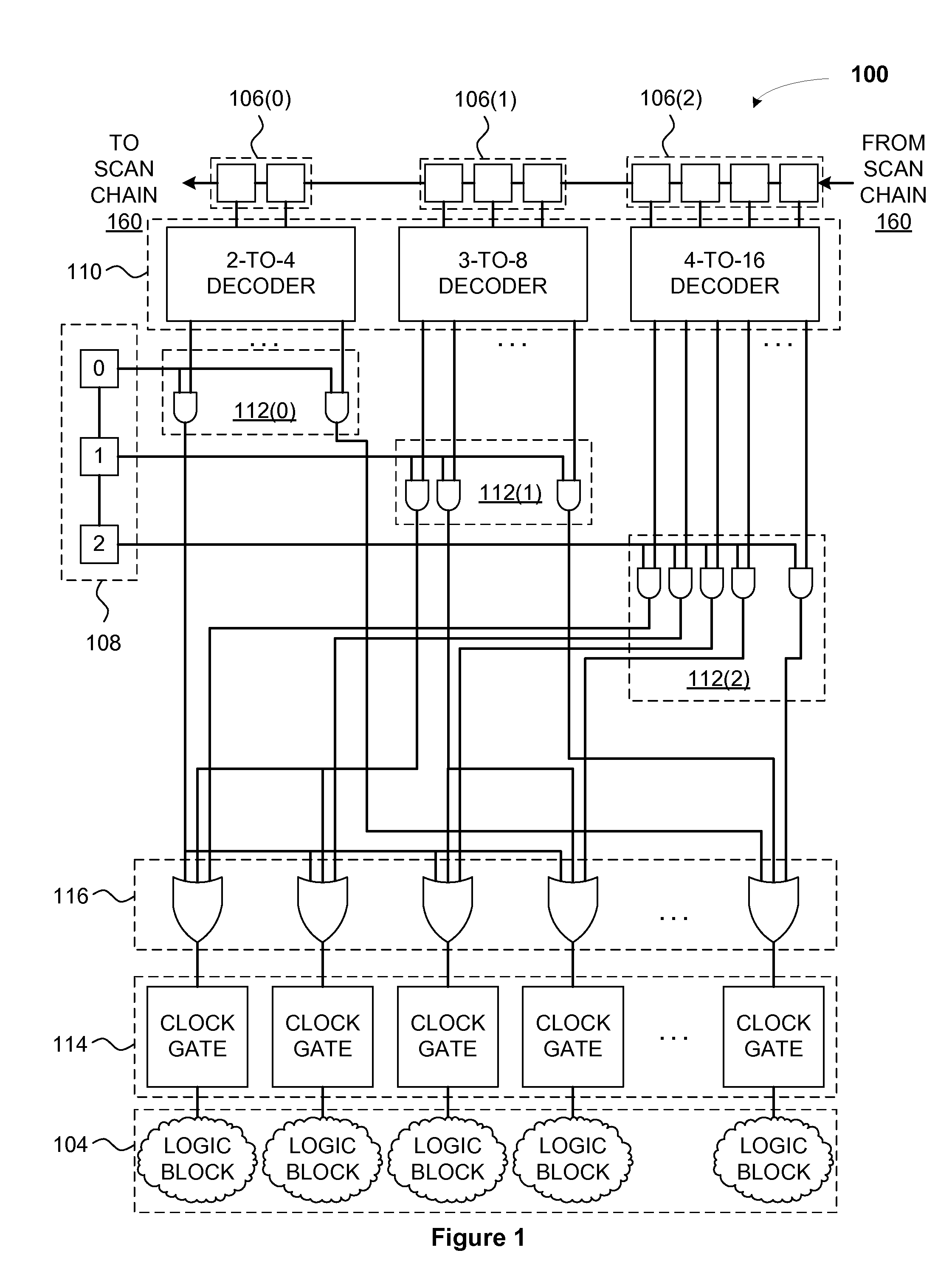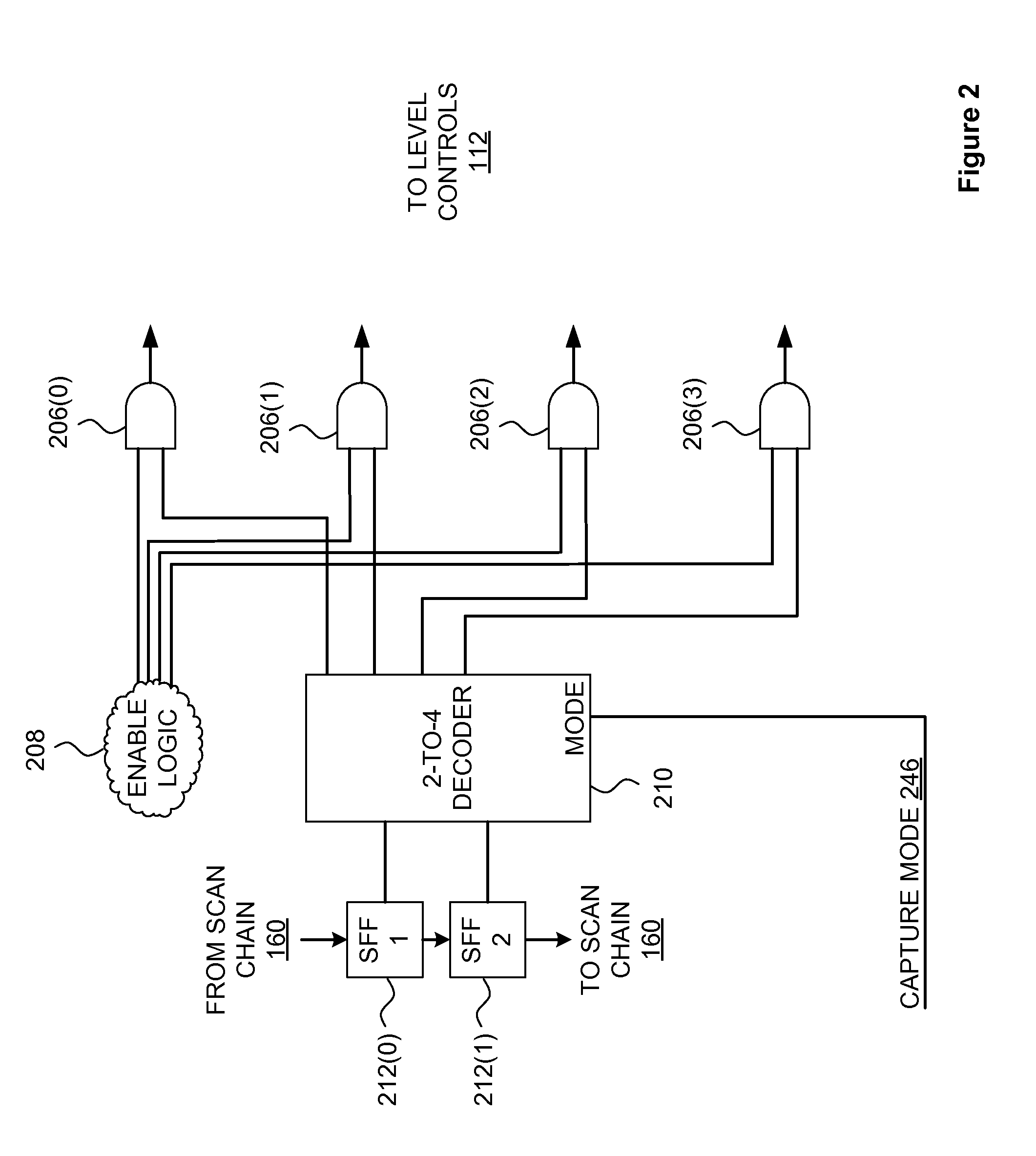Power droop reduction via clock-gating for at-speed scan testing
a technology of clock gating and at-speed scan, which is applied in the direction of pulse generators, pulse techniques, instruments, etc., can solve the problems of sudden demand for a large amount of current from power droop on the power grid of the device, so as to reduce the power droop during at-speed testing of the device, reduce the test time, and increase the test yield
- Summary
- Abstract
- Description
- Claims
- Application Information
AI Technical Summary
Benefits of technology
Problems solved by technology
Method used
Image
Examples
Embodiment Construction
[0019]In the following description, numerous specific details are set forth to provide a more thorough understanding of the present invention. However, it will be apparent to one of skill in the art that the present invention may be practiced without one or more of these specific details.
[0020]FIG. 1 illustrates a clock gating mechanism 100 configured to control power in an integrated circuit device under test (DUT), according to one embodiment of the present invention. As shown, the clock gating mechanism 100 includes selector flip-flops 106, a decoder tree 110, level controls 112, control bits 108, OR gates 116, clock gates 114, and logic blocks 104.
[0021]The selector flip-flops 106 form binary input codes that select which decoder outputs in the decoder tree 110 are active. As shown, the selector flip-flops 106 are grouped to provide inputs for the multiple decoders in the decoder tree 110. Selector flip-flops 106(0), therefore, provide two inputs for the 2-to-4 decoder within de...
PUM
 Login to View More
Login to View More Abstract
Description
Claims
Application Information
 Login to View More
Login to View More - R&D
- Intellectual Property
- Life Sciences
- Materials
- Tech Scout
- Unparalleled Data Quality
- Higher Quality Content
- 60% Fewer Hallucinations
Browse by: Latest US Patents, China's latest patents, Technical Efficacy Thesaurus, Application Domain, Technology Topic, Popular Technical Reports.
© 2025 PatSnap. All rights reserved.Legal|Privacy policy|Modern Slavery Act Transparency Statement|Sitemap|About US| Contact US: help@patsnap.com



